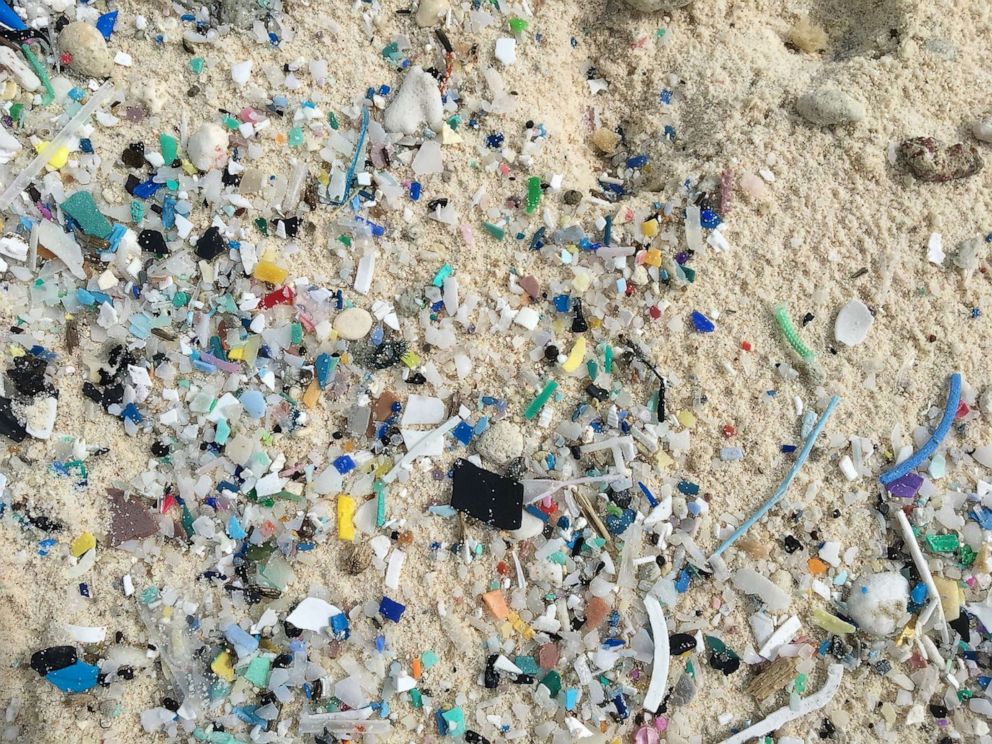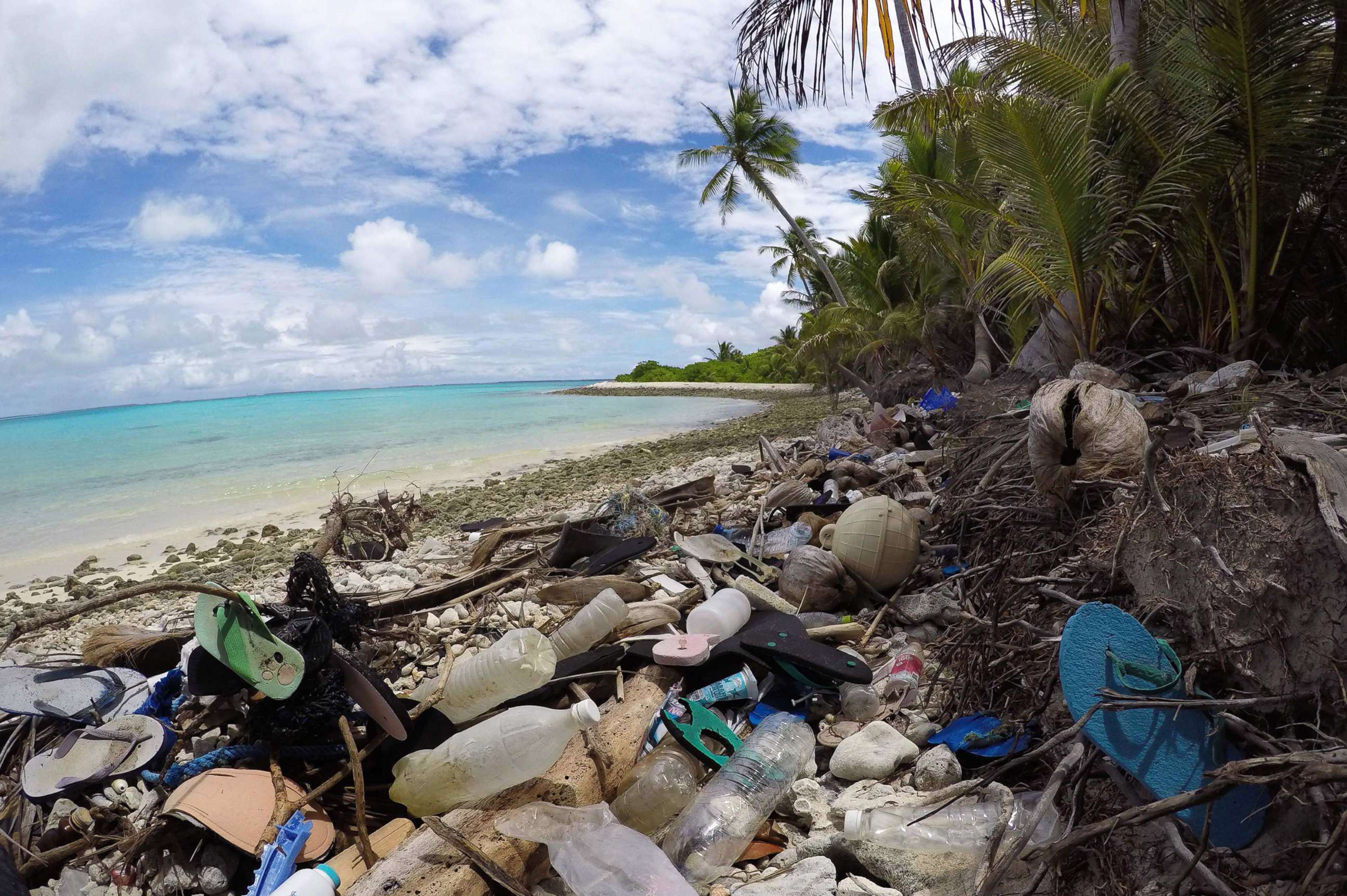On the remotest of islands, hundreds of tons of plastic and other waste washing ashore: Study
Flip-flops were one of the predominant consumer items found.
Millions of pieces of plastic are washing onto the shores of a chain of remote Australian islands, according to a new study.
The waste is polluting the Coco Islands, an archipelago of 27 tiny islands located in the Indian Ocean about 1,300 miles off the coast of northwest Australia. It mostly consists of bottle caps and lids, plastic drinking straws and shoes, "predominantly" flip-flops, according to a study published Thursday by Scientific Reports.
The study did not explore why flip-flops make up such a significant portion of the pollution.
An estimated 414 million items of debris, weighing about 238 tons, have been deposited onto the islands, researchers said. About 25% consists of disposable plastics, such as straws, bags and toothbrushes, and about 93% of the pollution has been buried beneath the sand.
The numbers are among the highest reported on remote islands, but underestimate the true amount of debris present, and should be interpreted as "minimum estimates," according to the study.

Scientists believe currents coming from several directions carry the plastic to the once-pristine beaches. The northern atoll of the archipelago, which is uninhabited and rarely visited, serves as an important breeding site for seabirds, researchers said. Other parts of the island are touted as Australia's last unspoiled paradise, where tourism is a primary source of income for the local community, according to the study.
Oceans have been a "reservoir for exponentially increasing amounts of plastic waste" for the past 60 years as global plastic production has ballooned, according to the study.
The Great Pacific Garbage Patch, the massive floating island of plastic between California and Hawaii, has now grown to three times the size of France, according to a study published in Scientific Reports in March 2018.
Once plastic is in the ocean, the waves and sunlight begin to break it down into small particles that remain for decades, perhaps centuries.

The removal of micro-debris from beaches is a "significant challenge," even in small scales, due to the time required to separate the plastic and other sediments from organic materials, according to the study. The removal of the buried debris could potentially have a dramatic impact on the environment because it would require a "major mechanical disturbance of sediments."
In addition, plastic has been documented at all levels of the marine food web, from the deepest trenches to the most far-flung beaches, researchers said.
If drastic steps to the way plastic is consumed and discarded are not made, the quantity of waste entering the ocean is predicted to increase 10-fold by 2025, according to a 2015 study published in Science Magazine.
"In the absence of meaningful change, debris will accumulate rapidly on the world’s beaches," researchers concluded. "Small, buried items pose considerable challenges for wildlife, and volunteers charged with the task of cleaning-up, thus preventing new items from entering the ocean remains key to addressing this issue."




